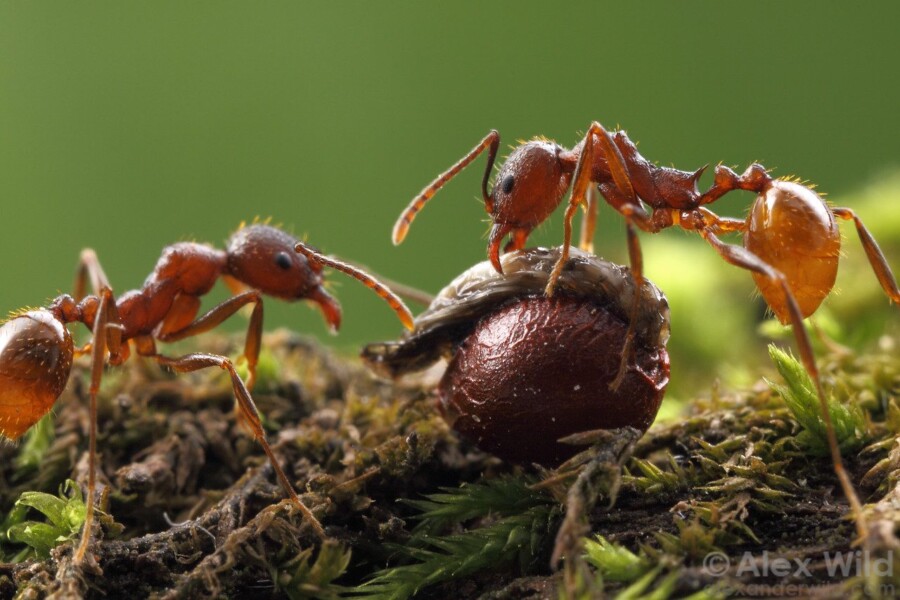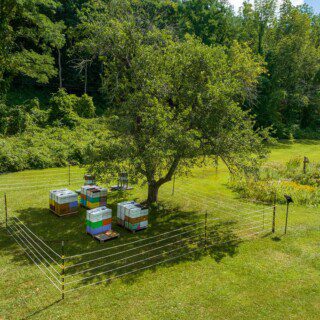
New Publication on Wildflower Seed Dispersal by Ants
Spring ephemeral wildflowers, like red trillium, trout lily, and Dutchman’s breeches have only a short period of time each year to grow, flower, and produce seeds. To make the most of their limited time, many of these species have come up with a creative strategy for seed dispersal — ants! These unique ants, of the genus Aphaenogaster, carry the seeds away to new locations where they can germinate, and in exchange, receive a small food reward (a fleshy structure on the top of the seeds, called an elaiosome, whose sole function appears to be to attract ants). Seed dispersal by ants is a very rare phenomenon since nearly all plants have their seeds dispersed by wind, birds, or mammals. Interestingly, some of the highest diversity of ant-dispersed plants in the world occurs right here in New England and New York forests.
In a new study published in the journal Food Webs, Great Hollow research scientist Dr. Rob Clark conducted an experiment to see how important these wildflowers are as a food source for their mutualistic ants. While many studies have demonstrated that the wildflowers greatly benefit from the ants, it has remained unclear how much the ants benefit from the wildflowers in return. To test this, Dr. Clark and volunteers removed wildflower seeds from three experimental plots in a Connecticut forest while adding seeds to three other plots. After three years of this seed removal and supplementation, wildflower and ant abundance were measured and compared to control plots where no manipulation occurred. As expected, seed removal slightly reduced the relative abundance of wildflowers in those plots, but surprisingly, it did not reduce the abundance of the ants at all. Seed supplementation also didn’t increase the abundance of ants. This doesn’t necessarily mean that wildflowers aren’t important to Aphaenogaster ants, but demonstrates the ants are robust to long-term wildflower loss and disturbance, and able to get enough food from other sources when necessary.
In the course of the study, Dr. Clark catalogued 30 different species of spring ephemeral wildflowers growing in Connecticut forests, including seven native violet species, eastern and Carolina spring beauty, bloodroot, three trillium species, and American cow-wheat. This represents the first complete checklist of ant-dispersed wildflowers for the state of Connecticut. To learn more, you can access the journal article here.
Clark, R.E. 2022. Are seed-dispersing ants elaiosome-limited? An experimental test in a Connecticut forest dominated by myrmecochorous plants. Food Webs 32:e00242.
Above photo: ant dispersal of bloodroot seeds, by Alexander Wild.

 Previous Post
Previous Post Next Post
Next Post